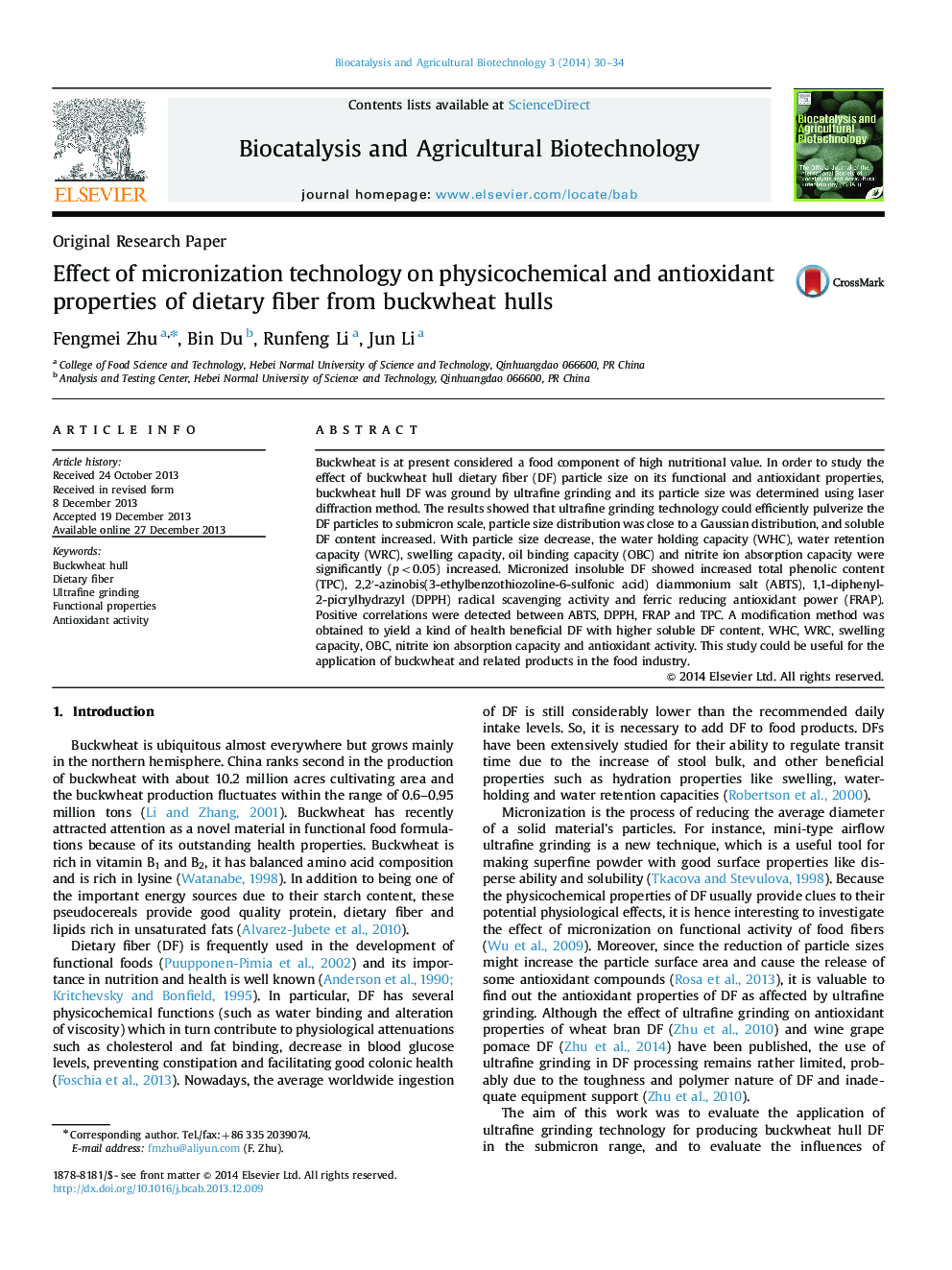| Article ID | Journal | Published Year | Pages | File Type |
|---|---|---|---|---|
| 2075416 | Biocatalysis and Agricultural Biotechnology | 2014 | 5 Pages |
Buckwheat is at present considered a food component of high nutritional value. In order to study the effect of buckwheat hull dietary fiber (DF) particle size on its functional and antioxidant properties, buckwheat hull DF was ground by ultrafine grinding and its particle size was determined using laser diffraction method. The results showed that ultrafine grinding technology could efficiently pulverize the DF particles to submicron scale, particle size distribution was close to a Gaussian distribution, and soluble DF content increased. With particle size decrease, the water holding capacity (WHC), water retention capacity (WRC), swelling capacity, oil binding capacity (OBC) and nitrite ion absorption capacity were significantly (p<0.05) increased. Micronized insoluble DF showed increased total phenolic content (TPC), 2,2'-azinobis(3-ethylbenzothiozoline-6-sulfonic acid) diammonium salt (ABTS), 1,1-diphenyl-2-picrylhydrazyl (DPPH) radical scavenging activity and ferric reducing antioxidant power (FRAP). Positive correlations were detected between ABTS, DPPH, FRAP and TPC. A modification method was obtained to yield a kind of health beneficial DF with higher soluble DF content, WHC, WRC, swelling capacity, OBC, nitrite ion absorption capacity and antioxidant activity. This study could be useful for the application of buckwheat and related products in the food industry.
